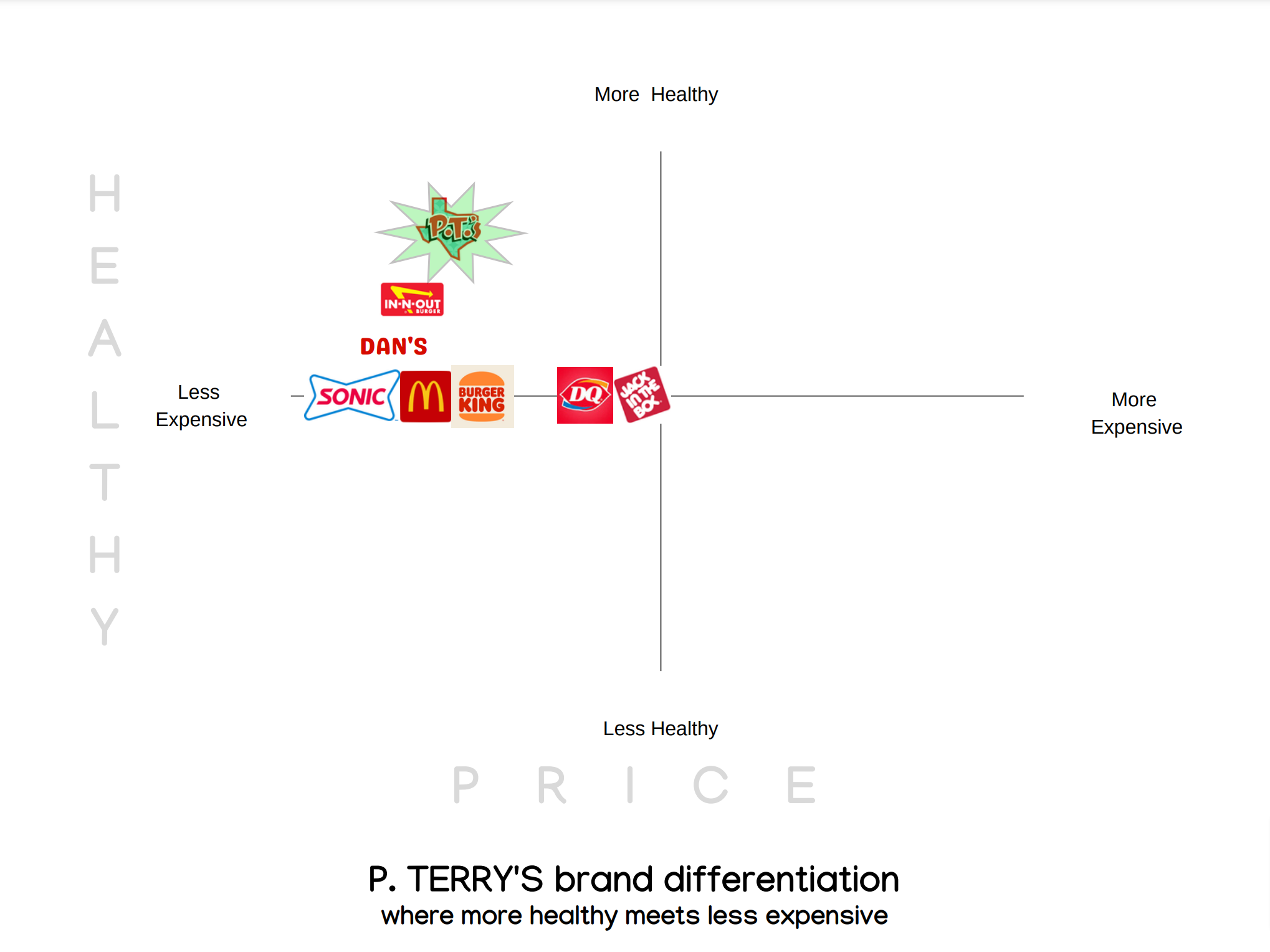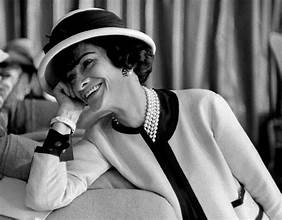
After creating several Brand Maps, the map illustrating the most relevant attributes to your customers will stand out. This is your Brand Differentiation. It is how your brand connects and engages your customers in a way that is different and better than your competitors. It is the brand strategy that will help you win and grow your business.
Some categories for differentiation are:
Price- Burger King and Mcdonald’s offer $1 value meals. The cheapest burger at Hop Doddy’s is $8.25, which is expensive compared to Dans ($4.49) or Five Guys Burger ($6.99) but cheaper than posh restaurant burgers. Your brand can be the economy bestseller with a low price, or a premium brand with a high price, or somewhere in between at a sweet spot your customers will pay.
Product – L’Oreal has perhaps invested more than other cosmetic companies in research and technology on aging skin. The brand offers outstanding antiaging products that are at the cutting edge of innovation and relatively affordable. Nada-Moo has been selling dairy, gluten, and sugar-free ice cream in Austin since 2004 and nationally since 2016. It is made with coconut milk, agave syrup, and other organic, natural, and vegan ingredients.
Service – When Ally bank, one of the first digital-only banks launched, they won customers by answering the phone within minutes when local banks offered long wait times routed through overseas call centers. The voice that answered at Ally was familiar and friendly, allaying any fear of a nonexistent brick and mortar structure to drive to. By providing great phone service, they did away with real estate expenditure, won customers, and succeed as a virtual-only bank.
Relationship – whether you will admit to loving Amazon, it is likely you have bought and will buy again from Amazon. Easy ordering and fast delivery are hard to beat. And often, their curated recommendations are what we buy. These recommended products are based on your purchase history, items in your cart, items you viewed recently, items purchased by others who bought a similar product, and more. This advanced algorithm creates convenience for customers and a strong customer relationship. Your company does not have the power to process data on Amazon’s scale, you can still create a strong customer relationship by learning as much as you can about your customer and giving her what she wants and needs.
Experiential – letting the customer experience the product or service increases the chances of the customer making a purchase. Warby Parker sends you five frames to try for five days in the hope you will pick and order one or more eyeglasses. Stitch Fix is a personal styling service that sends individually picked clothing and accessories for a fee. Customers fill out a survey online about their style preferences. A stylist picks and sends items to the customer who has three days to choose to keep the items or return some or all of them.
Niche – when you start a business, niching is a necessary first step so that you can laser focus all your efforts on one target audience. Once you are established in your niche, you expand to other markets. Yeti first marketed their coolers to people who are passionate hunters and fishermen like their founders. Today they have expanded to include all lovers of the outdoors who crave adventure. Almost all brands start with a niche. What is yours?
Be the underdog – when you are starting and small, being the underdog and emphasizing your brand’s humble beginnings can help you differentiate, especially if your competitors are focused on being the biggest and the best. Dripping Springs Vodka is underdog to Deep Eddy Vodka is underdog to Tito’s. Once upon a time Apple, Amazon, Microsoft, Facebook and Dell were underdogs. Heartwarming founder stories help. Jeff Bezos, Steve Jobs, and Bill Gates started in garages, Mark Zuckerberg and Michael Dell from their college dorm rooms. All of them challenged perceived big guys proclaiming themselves as the people’s champion.
Expert – as more experts emerge in every field, being more specific with your expertise can help you carve a market. Prowess Project, an Austin venture, are expert in helping women re-enter the workforce after having children. They specialize in educated, experienced women who are struggling to find empowering, and flexible opportunities. Prowess Project connects companies looking to hire fractional project managers based on skill set, personality, compatibility, and availability.
Heritage/Place of Origin – Tequila 512 is named for the local area code of Austin. The tequila is made in small batches, it is said to be a quality product at a good price and with an Austin vibe.
Rename/Reposition – In 2021 Facebook changed its name to Meta, in the hopes of transitioning into a metaverse company, where instead of just viewing content, users will be “in it”. Aunt Bertha, a Texas search and referral platform for social services in the US, was rebranded to FindHelp; a name shift that helps customers instantly understand the company’s mission.
Standout on shelves, literally – RX Protein Bars standout with a single-color label and a list of ingredients in white large print.
Brand Story – Ms. Goodson’s story of sharing her great Uncle Ray’s peanut brittle when she was in India and how it led her to launch Uncle Ray’s Peanut Brittle is an example of a compelling brand story that elevates the sugary snack to a symbol for love.
Give back – Tom’s shoes became known as the company that gave a new pair of free shoes to youth in developing nations for every pair sold. Today a third of their profits support partnerships with community organizations for sustainable change.
Solve a universal problem – do you have a product that solves everyday problems like self-adhesive door stoppers, blue light blocking glasses, car phone mounts, food huggers, a belt with pockets for running, cable organizers? Being the first to solve a new problem and or offer a new way to solve an old problem, and make life a little more convenient for customers is one way to differentiate your brand if it is applicable to your offering.
Fill an unmet need –P. Terry’s met Austin’s need for affordable food freshly made with quality ingredients and available fast at several locations in and around Austin. At the height of the opioid crisis, Goldfinch Health launched an app that offers a personalized, professional guide to patients with a high risk of addiction who are recovering through surgeries. Another Austin company, FloSports, a subscription video streaming service, offers live and on-demand access to sporting events not offered by mainstream media. As summers get hotter and longer, Swimply is meeting the need of consumers who cannot afford pools and want to swim in private. It is an online marketplace for renting a private swimming pool. Homeowners with swimming pools offer their pools for hourly rentals to individuals or groups.
Filling an unmet need in any category or a combination of categories is ultimately the best differentiator for your brand. A customer has an unmet need, you step in with your product or service and fulfill the need.



